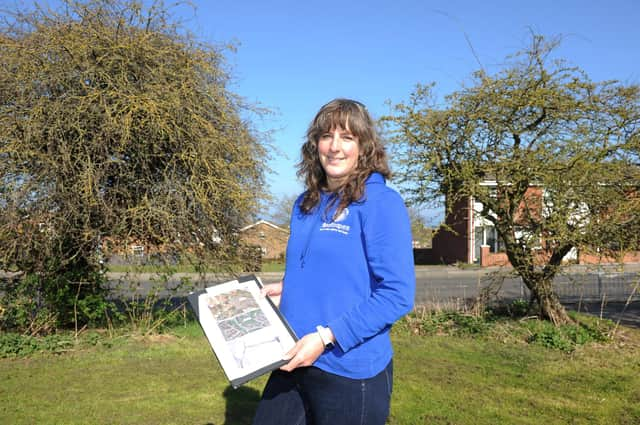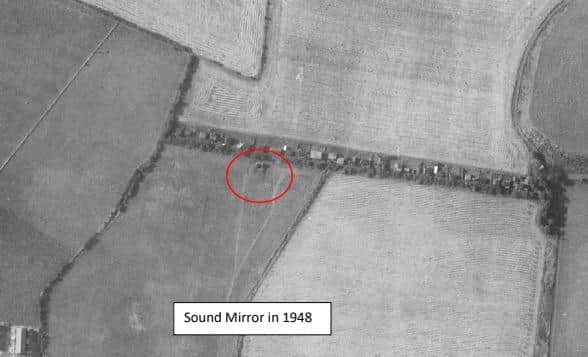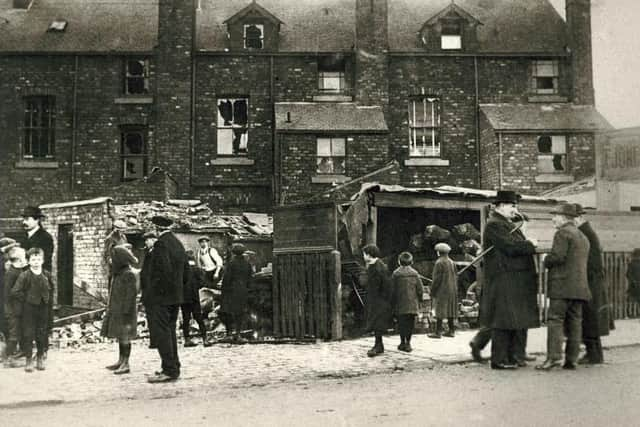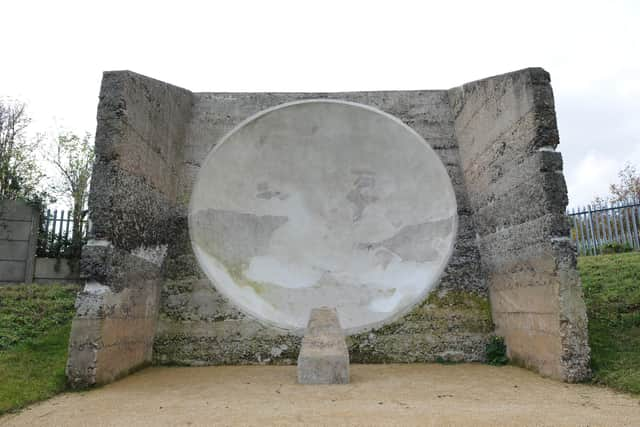New project will remember a forgotten part of Hartlepool's wartime heritage


Springwell Sound Mirror, which helped protect Hartlepool's coast during the First World War, was built on what was farmland at the time after the devastating Bombardment of the Hartlepools on December 16, 1914.
Advertisement
Hide AdAdvertisement
Hide AdFollowing the tragedy, an inquiry took place and a chain of acoustic mirrors was built along the east coast to fend off potential threat coming from the skies.


"There was an inquiry as to why it had happened and that inquiry identified the fact that the warships will not be able to do that again, because defences were in place, but that aircraft could,” Robin Daniels, archaeology officer at Tees Archaeology explained.
"Therefore they put in place air defences right along the coast, because they realised that air was the biggest threat once the Royal Navy got organised.
"It was a direct consequence of that bombardment.”
The project was top secret at the time and not much is known about when exactly the sound mirror was built or how long the building took.
Advertisement
Hide AdAdvertisement
Hide Ad

"I suspect it was probably built quite quickly, but there was a whole string of them built along the coast, all built at the same time between 1916 and 1917,” said Robin.
Six mirrors in total were built on the North-East coast as part of a national response.
It was hoped they would pick up the sound of approaching aircraft and alert both the civilian population and the operators of anti-aircraft guns.
It was the only early warning system Britain had until radar was brought in in 1938.
Advertisement
Hide AdAdvertisement
Hide Ad

Only three sound mirrors survive in the region today – at Boulby, Redcar and Fulwell, in Sunderland.
Not much is known about the Springwell sound mirror, which was demolished in the 1960s to make way for the Clavering estate.
Vicky Ward, who is access and volunteer officer at Seascapes, hopes the upcoming community project will help determine the exact location of the mirror and raise awareness of its importance in defending the coast.
She said: "It’s quite interesting how they work, because there would have been a below ground chamber away from the mirror which would’ve had an operator in it and the mirror would have reflected the acoustics and the sound waves down through a pipe system.
Advertisement
Hide AdAdvertisement
Hide Ad"Then, the operator will have been able to determine whether or not there was any kind of activity happening in the sky.”
She added: “Its role was a very significant one and it may have been involved in the shooting down of Zeppelin L34 in Hartlepool Bay in November 1916.”
There was a series of Zeppelin raids on the East coast of England.
A combination of elements – including the sound mirror – helped fend off the Zeppelin attack near Hartlepool on November 27, 1916.
Advertisement
Hide AdAdvertisement
Hide Ad"It was across the coast in the Sunderland area and was picked up by search lights,” said Robin.
"We don’t know the role of the sound mirrors, because it’s not recorded, probably because it was secret.
"It was picked up by search lights and eventually an aircraft from the airfield at Seaton Carew found it and got the Zeppelin down in the bay of Hartlepool.
"It was probably a combination of using the sound mirror, using search lights and local aircraft that brought it down.”
Advertisement
Hide AdAdvertisement
Hide AdNow the project, which is a collaboration between Seascapes and Tees Archaeology, will try to find out more about this piece of hidden Hartlepool heritage.
Robin added: “It was demolished some time ago and a lot of people have got no knowledge that it was ever there or its role in helping defending the North East coast in the First World War.
"Obviously, at that time, people didn’t have the same level of interest in these things and as a result the mirror was demolished in order to build the estate.
"We know there was another sound mirror at Seaham, just up the coast, which was demolished 10 years later, in the 1970s.
Advertisement
Hide AdAdvertisement
Hide Ad"If they got in the way, they tended to get demolished as oppose to now when we would do anything we can to preserve them.”
The project will start with a geophysical survey, followed by an excavation, hopefully revealing the exact location and the size of the mirror.
"The geophysical survey will hopefully identify more of exactly where it is because we don’t know precisely, “ said Robin.
"We would hope to find in the geophysical survey, and perhaps later in the excavation, the foundations of the sound mirror, because the whole thing was built of concrete, so there will be concrete foundations.
Advertisement
Hide AdAdvertisement
Hide Ad"In addition, they would have had facilities next to it where they would have listened for the sound. That would have been dug in the ground, or it could have been in a building next to the sound mirror. We would be looking for traces of that.”
Vicky said: "We are aware this mirror is now situated right in the middle of a local community and we’d really like local people who have an interest in their local community or in the history of the North East coast or in the role this coast played during war time, to just get involved.
"People can get involved as much or as little as they would like to.”
An informal workshop will be arranged shortly and a date for the geophysical survey will be organised.
Advertisement
Hide AdAdvertisement
Hide AdNo previous experience is required. If you are interested, contact Vicky on [email protected].
